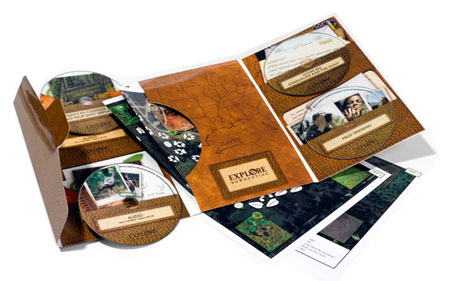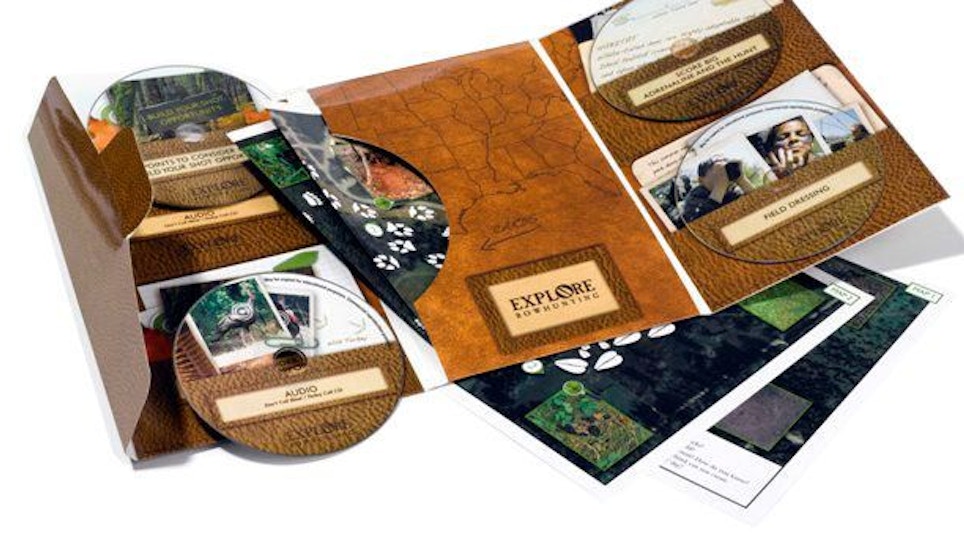The bridge from urban sidewalks to woodland trails includes many of the same obstacles as the bridge between introductory archery classes and a lifetime of archery recreation. To cross such divides, most need more than one or two opportunities.
“Nature-based outdoor recreation provides emotional and physical benefits, but few young people are exposed to it,” said Emily Beach, the ATA’s education and research manager. “Traditionally, parents and other older family members were more involved in introducing young people to the outdoors. In today’s hectic world, that’s no longer the case.”
Beach and the ATA hope that Explore Bowhunting will help. This fun, comprehensive outdoors curriculum helps beginning archers of all ages learn the skills and knowledge they need to become effective bowhunters.
“The overall goal of Explore Bowhunting is to get more people into the sport, but that’s a long-term goal,” said Jennifer Mazur, the ATA’s education specialist. “After some people are introduced to archery, the next step is introducing them to the outdoors. Nature is a mystery to many people, not just youngsters…. Explore Bowhunting actively involves students in the outdoors. They’ll learn basic skills like identifying calls, animals and animal tracks, getting close to animals, discovering where they live, and learning to speak their language.”
 The days of standing in front of a classroom and lecturing with a slide show are over. |
Interactive Classrooms
It’s no coincidence that words like “active” and “interactive” keep popping up when discussing Explore Bowhunting..
Mazur said, “When I visit my daughter’s middle-school classroom, they all have remote controls and they press a button when they know the answer.… That’s where things are going. Even when you get them outdoors, you can’t leave kids standing around, watching. Your curriculum has to be interactive.”
Beach agreed. “It must offer hands-on instruction and learning. A good curriculum builds on itself and reinforces earlier lessons. Explore Bowhunting does that. And even though it was designed with kids in mind, it also works with adults who want to learn about bowhunting.”
Since its release in January 2010, Mazur and Beach have held workshops in Virginia, Michigan, Oklahoma, Nebraska and Arizona. Next, they also expect Ohio, Nevada and Kentucky to explain and teach the Explore Bowhunting program. In turn, adult educators will teach bowhunting to youths 11 to 17 years old, as well as adults. Participants also receive Explore Bowhunting “teaching trunks,” which contain the necessary gear and materials to teach basic bowhunting skills. The materials include a curriculum book of 22 lessons delivered with diagrams, step-by-step content, imagery and formatting that makes for easy consumption. A student handbook, equipment booklet and instructional DVDs for calling, field dressing and other important skills, accent the lessons with the visuals, audio and interaction that makes Explore Bowhunting a top-shelf educational product.
Rave Reviews
Michigan hosted the first Explore Bowhunting workshop. The attendees came from urban, suburban, and rural areas, and represented private organizations, schools, nature centers, church groups, government education programs, and park-and-recreation departments.
“It was encouraging to see the excellent number of participants and organizations,” said Mary Emmons, archery education coordinator for Michigan’s Department of Natural Resources and Environment (MDNRE). “It reaffirmed the real desire among many adults to do what they can to get kids back outdoors.”
Colin Berg, education section supervisor for the Oklahoma Department of Wildlife and Conservation, is impressed by Explore Bowhunting. “It’s put together really well,” he said. “I think instructors and students will find it highly interesting and helpful. The first step was getting instructors interested in the curriculum. If they don’t find it interesting, nothing they say will get kids interested.”
Currently, 75 Oklahoma teachers are certified to teach hunter education through school programs. Berg said the state’s goal is to have 100 certified teachers by the end of 2010. If the agency hits that target, it expects the teachers would help certify 5,000 to 6,000 students in hunter education.
“Even if all of them do not become hunters, we expect they will at least gain a better appreciation for the role hunting plays in conservation,” Berg said.
The Big Picture
Beach said, “We realize bowhunting isn’t for everyone, but that doesn’t mean some participants won’t benefit from the program. Everyone taking this course will improve their understanding of bowhunting’s challenges, how carefully states manage wildlife populations, and how much money hunters pour into their state’s wildlife programs. Hunters might know all that, but few nonhunters realize how much time, money and manpower hunting provides to conservation at no charge to general taxpayers.”
However, Mazur said many experienced hunters unintentionally impede hunting because of their familiarity with the outdoors. “They sometimes perceive problems that don’t exist,” she said. “The more I work on Explore Bowhunting, the more I realize most nonhunters are simply curious about hunting. Hunters shouldn’t assume society condemns or dislikes hunting or bowhunting. The fact is, most people don’t even think about it. They’re too far removed from the outdoors to have a strong opinion. They usually accept hunting as long as they know hunters eat what they kill.”
Putting The Cart First
Mazur said Explore Bowhunting also helps put an important horse back in front of its cart. “Hunters need and want information and skills learned in hunter-education classes, but not many people want to take those classes until they know more about hunting. Our hunter-education programs evolved when most hunters grew up in hunting families or communities where hunting was popular. They learned enough on their own to realize they wanted to take the next step.
“But a lot of kids today never get that exposure to hunting,” she continued. “They aren’t going to commit time and energy to a formal hunter-certification course until they know more about hunting.”
Mazur recalls her days as a Parks Service naturalist in Virginia and Maryland. “A couple of years ago I took 120 kids on a ‘prowl’ in the woods, and called in four owls. They were amazed. They’re still talking about it two years later…. Those are the kind of experiences we can share with kids around the country through Explore Bowhunting.”






